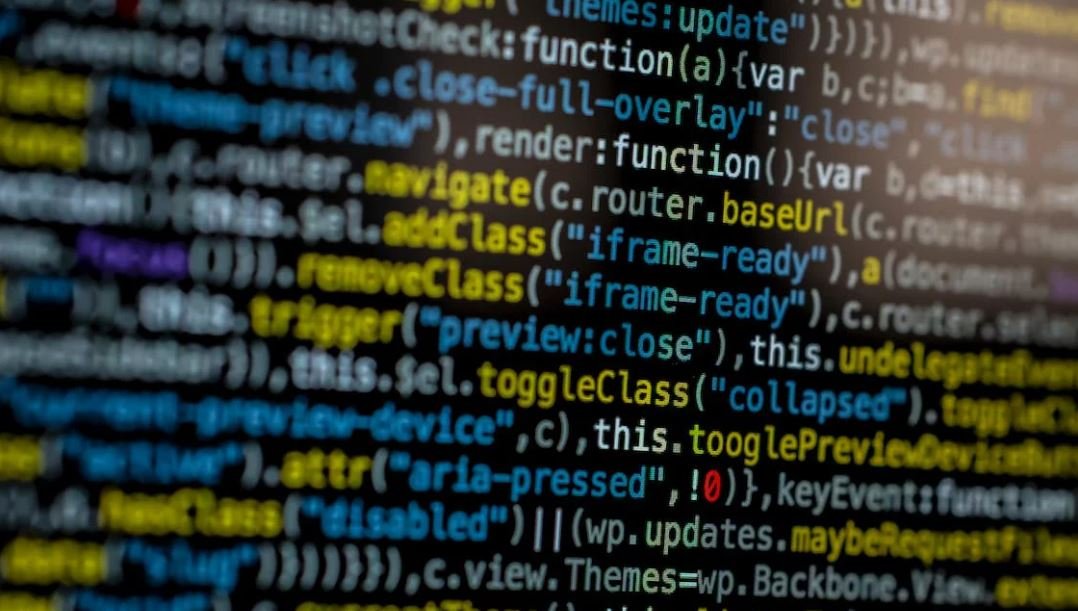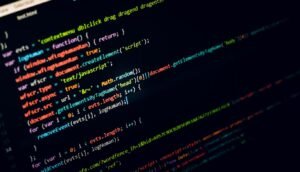Difference AI vs ML
Artificial Intelligence (AI) and Machine Learning (ML) are both terms used in the field of technology, but they have distinct meanings and applications. While often used interchangeably, it is important to understand the differences between the two concepts.
Key Takeaways
- AI refers to the simulation of human intelligence in machines, enabling them to perform tasks that typically require human intelligence.
- ML is a subset of AI that focuses on the development of algorithms that allow computers to learn and make predictions or decisions without being explicitly programmed.
- AI can include ML, but ML is not necessarily AI.
Understanding AI and ML
**Artificial Intelligence (AI)** is a broad concept that revolves around the creation of intelligent machines capable of mimicking human behaviors and performing tasks with human-like intelligence. It aims to simulate human intelligence by enabling machines to understand, analyze, and respond to complex situations. *AI systems can process and interpret vast amounts of data to make informed decisions or take actions based on previously learned patterns.*
**Machine Learning (ML)** is a narrower field that falls under the umbrella of AI. It focuses on the development of algorithms that allow machines to learn from and improve upon experiences without being explicitly programmed. *ML algorithms are designed to analyze large datasets and make predictions or take actions based on patterns and insights derived from the data.*
Differences between AI and ML
While AI and ML are often used together, they differ in their scope, purpose, and functionality. Here are some key differences between the two concepts:
1. Scope:
- **AI** encompasses a wide array of techniques and technologies that aim to replicate human intelligence across various domains.
- **ML** is a subset of AI, focusing on algorithms that enable machines to learn from data and improve their performance without explicit programming.
2. Learning Approach:
- **AI** systems can operate in a rule-based manner or use machine learning techniques to adapt and improve over time.
- **ML** algorithms learn from data iteratively, continuously improving their performance as they process more data.
3. Dependency:
- **AI** can operate without relying on ML techniques and algorithms.
- **ML** heavily depends on data and requires large datasets for training and improving its models.
Overall, while AI and ML are closely related, it is important to recognize that ML is a specific subset of AI and focuses on learning from data to make predictions or decisions. AI, on the other hand, encompasses a broader scope of techniques and technologies aimed at creating machines that can perform tasks in a way that simulates human intelligence.
Tables with Interesting Information
| AI | ML |
|---|---|
| AI aims to replicate human intelligence. | ML focuses on learning from data. |
| AI can operate rule-based or use ML techniques. | ML algorithms learn from data iteratively. |
| AI encompasses a broad range of techniques and technologies. | ML is a subset of AI. |
| AI | ML |
|---|---|
| AI can operate independently of ML. | ML heavily relies on large datasets. |
| AI can process and interpret vast amounts of data | ML algorithms make predictions based on data patterns. |
| AI | ML |
|---|---|
| AI can simulate human-like intelligence. | ML algorithms continuously improve with more data. |
| AI has a broader scope beyond learning algorithms. | ML specializes in learning algorithms. |
Conclusion
In summary, AI and ML are distinct concepts. While AI encompasses a broader range of techniques aiming to replicate human intelligence, ML focuses specifically on learning from data to make predictions or decisions without explicit programming. Understanding the differences between AI and ML is essential for gaining insights into their unique applications and potential in various industries.

Common Misconceptions
Artificial Intelligence (AI) vs Machine Learning (ML)
There are several common misconceptions surrounding the differences between Artificial Intelligence (AI) and Machine Learning (ML). One misconception is that AI and ML are interchangeable terms, but in reality, they are distinct concepts. AI refers to the capability of a machine or computer system to perform tasks that would typically require human intelligence, while ML is a subset of AI that focuses on the ability of machines to learn and improve from data.
- AI and ML are not the same thing.
- AI is broader in scope and includes ML as one of its components.
- ML relies on algorithms and statistical models to make predictions or take actions.
Another common misconception is that AI and ML are only relevant to advanced technologies and futuristic applications. While it is true that AI and ML have been making significant advancements in fields such as self-driving cars and virtual assistants, they also have practical applications in many everyday scenarios. From recommendation systems used in online shopping platforms to email spam filters, AI and ML technologies are being incorporated into various consumer products and services.
- AI and ML are not limited to sci-fi or advanced technological applications.
- They have practical applications in various industries and everyday scenarios.
- Consumer products and services increasingly incorporate AI and ML technologies.
Some people believe that AI and ML are capable of human-level intelligence and decision-making. However, this is a misconception. While AI and ML can demonstrate impressive capabilities in specific tasks, they lack the general intelligence and consciousness that humans possess. AI and ML systems are designed to process large amounts of data and make predictions or take actions based on patterns and algorithms, but they are not capable of humanlike thinking or emotions.
- AI and ML do not possess human-level intelligence or consciousness.
- They are designed to process data and make decisions based on patterns.
- Human thinking and emotions are not replicated by AI and ML systems.
Another misconception is that AI and ML technologies are inherently biased or discriminatory. While it is true that biased data can lead to biased outcomes in AI and ML systems, it is not the technology itself that is biased. Bias can arise from the data used to train these systems, which reflects the biases in society. It is essential to address and mitigate these biases by ensuring diverse and representative datasets and implementing ethical guidelines in the development and deployment of AI and ML systems.
- AI and ML technologies are not inherently biased.
- Bias can be introduced through biased training data.
- Addressing bias requires diverse and representative datasets and ethical guidelines.
Finally, some people mistakenly believe that AI and ML will replace human workers entirely, leading to widespread unemployment. While AI and ML technologies can automate certain tasks and improve overall efficiency, they are more commonly seen as tools that augment human capabilities rather than replace them. These technologies can handle repetitive or data-intensive tasks, enabling humans to focus on more complex and creative work. Moreover, new job opportunities are expected to emerge as AI and ML continue to advance.
- AI and ML technologies do not necessarily lead to human unemployment.
- They are seen as tools that enhance human capabilities.
- AI and ML advancements can create new job opportunities.

Introduction
Artificial Intelligence (AI) and Machine Learning (ML) are two closely related fields that have had a significant impact on various industries. While they share commonalities, there are distinct differences between AI and ML. In this article, we explore these differences through ten interesting tables.
Table: AI vs ML – Definitions
Before diving into the comparison, it’s important to understand the basic definitions of AI and ML.
| AI | ML |
|---|---|
| Artificial Intelligence | Machine Learning |
| Branch of computer science that focuses on creating intelligent machines capable of human-like decision making and problem solving. | Subset of AI that involves the development of algorithms that allow machines to learn from data and make predictions or decisions without being explicitly programmed. |
Table: AI vs ML – Approach
Another crucial distinction between AI and ML lies in their respective approaches.
| AI | ML |
|---|---|
| Top-down approach | Bottom-up approach |
| Based on pre-defined rules and logic, simulating human intelligence. | Relies on data, patterns, and algorithms to learn and improve over time. |
Table: AI vs ML – Problem Solving
Both AI and ML excel at solving complex problems, but the methodologies they employ differ.
| AI | ML |
|---|---|
| Symbolic reasoning, expert systems, and knowledge representation. | Predictive modeling, pattern recognition, and statistical analysis. |
| Explicitly programmed rules. | Data-driven decisions. |
Table: AI vs ML – Scope
While AI is broader in scope, ML is a subset of AI that focuses on a specific aspect of intelligent systems.
| AI | ML |
|---|---|
| Broad, encompasses various domains and applications. | Narrow, primarily focuses on prediction and decision-making tasks. |
| Can incorporate ML techniques as part of its implementation. | Designed to train models from data and handle specific problems. |
Table: AI vs ML – Real-World Examples
These examples demonstrate the practical application of AI and ML in different fields.
| AI | ML |
|---|---|
| Self-driving cars | Recommendation systems like Netflix |
| Natural language processing (voice assistants) | Fraud detection algorithms |
Table: AI vs ML – Data Requirements
The amount and nature of data needed differ for AI and ML systems.
| AI | ML |
|---|---|
| May operate with limited or no real-time data. | Requires large amounts of diverse data for training and making accurate predictions. |
| Focuses more on reasoning and decision-making based on rules. | Relies heavily on historical and real-time data to recognize patterns. |
Table: AI vs ML – Decision-Making Autonomy
Autonomous decision-making capabilities differ between AI and ML.
| AI | ML |
|---|---|
| Can make decisions and take actions independently. | Requires human intervention to set parameters and evaluate output. |
| Can operate without real-time data. | Dependent on real-time data and updates for optimal performance. |
Table: AI vs ML – Complexity
AI and ML systems vary in complexity, requiring different amounts of computational resources.
| AI | ML |
|---|---|
| High complexity, computationally demanding. | Varies depending on the complexity of the model and dataset. |
| Requires significant computational power and memory. | Can be implemented on less powerful hardware. |
Table: AI vs ML – Learning Paradigm
The learning paradigm differs between AI and ML, influencing how they adapt and improve.
| AI | ML |
|---|---|
| Programmed to mimic decision-making based on predefined rules. | Uses algorithms to learn from data and continuously improve its performance. |
| Static representation of knowledge and reasoning. | Dynamic model that adjusts its behavior based on new data and experiences. |
Conclusion
AI and ML complement each other while also exhibiting distinct differences. AI focuses on simulating human intelligence and problem-solving using predefined rules, while ML leverages data and algorithms to learn and make predictions. Their respective approaches, scopes, and applications further highlight their disparities. Understanding these differences is crucial for leveraging their capabilities effectively in various domains.
Frequently Asked Questions
What is the difference between AI and ML?
AI (Artificial Intelligence) is a broad field of computer science that focuses on creating smart machines capable of mimicking human intelligence and performing tasks that typically require human intelligence. ML (Machine Learning), on the other hand, is a subset of AI that involves training machines to learn from data and improve their performance over time without being explicitly programmed.
How does AI work?
AI systems typically work by taking in large amounts of data, processing it using various algorithms and models, and then making predictions or performing tasks based on this processed information. These systems can make decisions, recognize patterns, and adapt their behavior based on the input and feedback they receive.
What is the role of ML in AI?
ML plays a crucial role in AI as it provides the algorithms and techniques necessary for machines to learn from data and improve their performance without explicit programming. ML algorithms enable AI systems to analyze and understand complex patterns, make predictions, and adapt their behavior based on the available data.
What are the main types of ML algorithms?
There are several types of ML algorithms, including:
- Supervised learning: where the algorithm learns from labeled examples to make predictions or classify new data.
- Unsupervised learning: where the algorithm learns patterns and relationships in unlabeled data without any predetermined classes.
- Reinforcement learning: where the algorithm learns through trial and error by receiving feedback and rewards based on its actions.
- Deep learning: a subfield of ML that uses artificial neural networks to learn and make complex decisions.
Can you give examples of AI applications?
AI finds applications in various domains, including:
- Virtual assistants like Siri, Amazon Alexa, and Google Assistant.
- Recommendation systems used by platforms like Netflix and Spotify.
- Social media algorithms that personalize content based on user preferences.
- Image and speech recognition systems.
How is ML different from traditional programming?
In traditional programming, explicit instructions and rules are provided to solve specific problems. In contrast, ML involves training machines using large datasets to learn patterns and make decisions on their own. ML systems are designed to improve and adapt their performance over time, whereas traditional programming typically relies on fixed rules and logic.
What are the main challenges in AI and ML?
Some of the main challenges in AI and ML include:
- Data quality and availability.
- Ensuring privacy and ethical use of AI.
- Interpretability and explainability of AI decisions.
- Algorithm bias and fairness.
- Robustness and reliability of AI systems.
Is AI going to replace humans in the workforce?
While AI and automation may replace certain job roles, it is unlikely that AI will completely replace humans in the workforce. AI systems excel at performing specific tasks and can augment human capabilities, but they lack the general intelligence and creativity of humans. In many cases, AI is expected to work alongside humans, automating repetitive tasks and allowing humans to focus on more complex and creative work.
How can AI and ML be beneficial in healthcare?
AI and ML have various potential applications in healthcare, including:
- Medical image analysis for early detection of diseases like cancer.
- Drug discovery and development.
- Personalized medicine and treatment recommendation.
- Health monitoring and wearable devices.
- Assisting in diagnosis and prognosis.
What is the future of AI and ML?
The future of AI and ML holds great potential. With ongoing advancements, we can expect AI to become more integrated into our daily lives, improving various industries and making complex tasks more efficient. ML algorithms will continue to evolve, handling larger and more diverse datasets while addressing challenges related to ethics, interpretability, and bias. AI and ML will continue to drive innovation and shape the future of technology.




